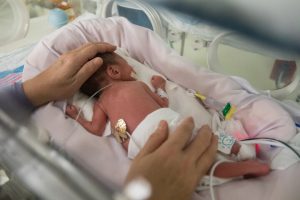Women who become pregnant through in vitro fertilization and experience a serious pregnancy complication are twice as likely to have a preterm birth (<37 weeks) than women who have only one of these factors, according to a Rutgers Health researcher. The study, published in JAMA Network Open, analyzed nearly 79 million hospital deliveries in the United States over two decades. It is the first study to examine the combined effects of assisted reproductive technology, such as IVF, and placental abruption on preterm birth rates.
Increased Risk of Placental Abruption and Premature Birth
The study used the National Inpatient Sample, one of the largest inpatient databases in the US, which includes hospital data from 48 states. Using data from 2000 to 2019, researchers identified more than 391,000 pregnancies in which assisted reproduction was performed and more than 850,000 cases of placental abruption, a known risk factor in which the placenta detaches from the uterus before birth.
The researchers involved in the study, led by Jennifer Zhang, lead author of the study and assistant professor of obstetrics and gynecology at Rutgers Robert Wood Johnson Medical School, found that women who became pregnant with the help of ART had a 42 percent higher risk of placental abruption than women who became pregnant naturally. They also found that women conceived through artificial insemination had a 46 percent higher risk of preterm birth than women conceived naturally. When both risk factors were present, there was a synergistic effect.
The researchers also found racial and ethnic differences. White women who became pregnant through ART had a 42 percent higher risk of placental abruption, which is similar to the overall average. For Hispanic women who became pregnant with ART, the risk was even higher at 66 percent. In contrast, black women who became pregnant through ART did not have a higher risk of pregnancy loss than black women who became pregnant naturally.
These findings could have significant implications for clinical practice, although Zhang cautioned against making immediate changes based on a single study. To do so, prospective studies are needed to confirm these findings, according to Cande Ananth, chief of the Division of Epidemiology and Biostatistics in the Department of Obstetrics, Gynecology and Reproductive Sciences at Rutgers Robert Wood Johnson Medical School and lead author of the study. But it could influence how clinicians approach certain situations, especially since it would be difficult to examine this particular relationship in a prospective study. For example, doctors might be more inclined to take aggressive action when an IVF patient shows signs of placental abruption. The question of whether the type of fertility treatment and the duration of treatment have an impact on placental abruption and preterm birth might be worth investigating.
Study Limitations
The research findings come at a time when the use of ART is on the rise. According to the Centers for Disease Control and Prevention, about 2 percent of all children in the U.S. are conceived using these technologies, up from less than 0.5 percent in 2000. As the use of ART has increased, so have concerns about potential complications. ART pregnancies are already associated with an increased risk of conditions such as pre-eclampsia and low birth weight births, according to the researchers.
However, the study has limitations. Because it was a retrospective analysis of hospital data, it was not possible to account for all potential confounders or distinguish between different types of ART. The researchers also pointed out that their data set likely underestimates the total number of ART pregnancies, as it relies on hospital coding practices that may not always accurately capture this information.
Despite these caveats, the findings underscore the need for careful monitoring of pregnancies resulting from artificial insemination, especially when complications arise, the researchers said. They also highlight the complex interplay between fertility treatments and pregnancy outcomes. Looking to the future, the researchers are focusing their attention on other possible complications of ART pregnancies.





